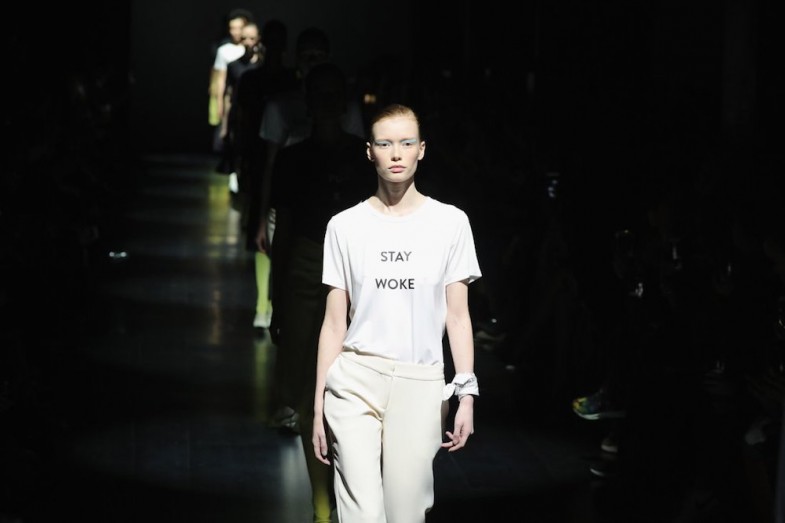Women's Day: young forces of emancipation
Share

Not a chance you have missed this year's international women's day! The force of emancipation is strong, and getting stronger. This article is about the role of social media as tools of empowerment for the younger generations.
Youngsters are embedded in an Internet culture where standing up for oneself has become the norm. Finding the power to become who you uniquely and innately are and to express yourself accordingly, greatly matters to this generation.
In the quest to become strong and unique personalities, youngsters' peers and heroes serve as prime inspirators and stimulators. This alliance is reciprocal. As such, discrimination relating to certain aspects of one’s identity is not tackled individually, but in union.
In the online world especially, youngsters have no problem finding peers with whom they can align to realise their emancipatory goals. Most of the influencers we’ve talked to believe that all people and creatures regardless of ethnic identity, race, religion and sexual orientation, deserve equal opportunity, rights and respect.
Expressing your true self
Any time a new technological development emerges, it gives rise to new forms for expression and social interaction. In current times there is a clear inclination towards forms that stimulate personal expression. It’s not about projecting a picture perfect life, but rather expressing what you truly stand for and believe in. Convictions and beliefs are preferably conveyed and manifested spontaneously. Via uncut video platforms like Snapchat or Periscope, social media heroes give an uncensored sneak peek into their lives. In a similar manner, live streaming platforms such as Chatroulette or YouNow are used as ’empowerment tools’, to train their assertiveness and vocality while talking to strangers who may very well live on the other side of the planet. With Tinder and other meet-up apps, it’s not uncommon to meet their chat partners in real life. Social interaction away from their comfort zone boosts their confidence.
#Joining forces
The original function of hashtags was to tag social media posts and link them to other posts relating to the theme in question. Simultaneously it ensured that people who didn’t follow you or your business also saw your post on their timeline. That it can be a powerful tool to get a global message of dissent out became palpably clear during the Occupy Wall Street protests. It created a strong sense of community and helped disadvantageous groups to organise themselves and join forces.
The same holds true for the #BlackLivesMatter community, which commends to put an end to police brutality and the on-going killing of African-Americans in the U.S. #TwoMenKissing stands up against the homophobia that spurred after the Orlando shooting in a gay nightclub that left at least 50 dead. Canadian teen Gabrielle Diana incited transgenders with the #MomentsInTransition to share photos of their transition, whereas the hashtag #ModelsOfColor was used to speak out against the lack of diversity in the fashion industry. The latter hit it off with one anonymous Instagram user, which was followed soon after by blogs, Tumblrs and other initiatives to support this movement.
Peers Paving The Way
Social media has helped young people find their own niche communities. Through YouTube vlogs — or video blogs — transgender teens have created an online community where they share their experiences transitioning from the gender they were assigned at birth to the one with which they now identify. One such in uential blogger is Skylar Kergil, a 25-year-old transgender musician, artist and activist from Boston with over 109K followers on YouTube. In his vlogs, he documents his experiences, such as the conversations he has with his family about his transition and the daily challenges he faces as a young person transitioning.
No matter how assertive and liberated these young adults are, some issues remain hard to open up about. The Rhodes bros, two 21-year-old American twins with a popular YouTube channel, became an overnight Internet sensation when they posted an emotional video in which they confessed via telephone to their father that they were both gay.
‘Leading up to it, we thought it was going to be super easy,’ Austin conferred in the Ellen DeGeneres Show. ‘But then, right when we called him... In my mind I was like, this could very well be the last time we’ll have a normal phone call, if he takes it bad.’
Coming out videos are just one example of how social stigmas in the blogosphere are challenged. This push dynamic has a dual e ect, in that these types of social media platforms diminish the distance between audience and content creators. Social media stars are challenged by their followers and fans to show their most candid and honest self. Their followers in turn feel supported because they see their hero open up about their sexual orientation or whatever the taboo is.
This is an extract of our new Youth Trend Report Browsing The Margin. To our shop!